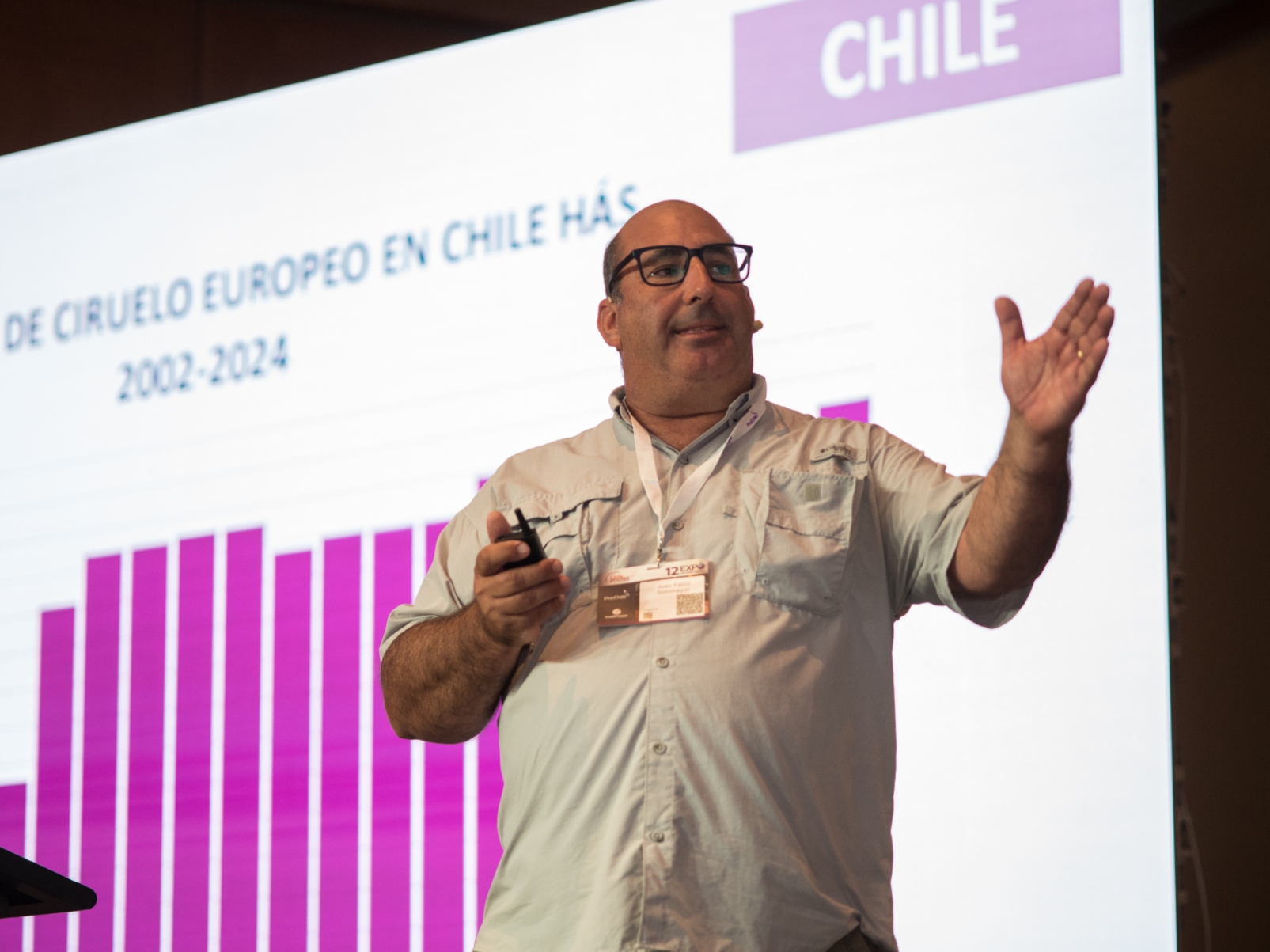Juan Pablo Sotomayor, Frutexa technical manager, during Expo Ciruelas Secas 2025 (Expo Prunes) gave us again key information and figures of national and international markets about producer countries, the season, cultivated hectares and details related to the Chilean prune among many other subjects.
In his report, the agronomist said, at the event organized by Chileprunes that, during 2024, the total plum production in Chile was 110,000 MT; from this amount the equivalent of 20,500 MT of dry product was used as fresh fruit and almost all of it went to China while the rest, 89,500 MT, was used for the drying industry. Regarding the size, the caliber was 80 (units per pound) as an average during 2024.
Regarding prices, the specialist added that in the las 5 years (the period from 2020 to 2024) with caliber 70, we have had an average price of US$ 2,05 per kilo. For the same caliber the average during the last 25 years has been US$ 1.4 per kilo.
Chile has 13,351 cultivated hectares with European plum; the VI Region has the most hectares, 9,700, equivalent to 72% of the total. This figure is not minor and it is obtained after updating the information regarding the VI Region from which we only had information until 2021; this explains how we have exceeded 13 thousand cultivated hectares. In three years, this region increased in 1,098 hectares the land planted with European plum (being Santa Cruz, Lolol, Peralillo and Palmilla very relevant). The second region with more cultivated hectares is the Metropolitan Region with 18.5% of the total and the third is the VII Region with 7.8%.
Other three big producers
And, how did the other big prune producers do?
Argentina is decreasing the cultivated hectares; during the 2023/2024 season it had 8,600 hectares after its peak of 16,000 hectares during the 2014/2015 season. Its prune production reached 38,000 MT in 2024.For 2025 they project 18,000 MT.
The United States has also been decreasing the productive hectares during the last five years. If we only compare the last two years during 2024 they obtained 70,000 MT while the previous year they obtained 82,000 MT. We should remember that last year the area suffered and extreme heat wave from the end of June until mid-July impacting the Sacramento and San Joaquín valleys with record high temperatures.
The other big international competitor, France, as of last August -considered the end of the season in the northern hemisphere- had 29,000 MT prune production after having, during 2023, 40,000 MT. During 2024, its cultivated area was 10,700 hectares including conventional and organic plantations, the same amount that in 2023 but with a reduction in the number of producers (a fall from 1,800 to 800 producers in the last 20 years); those producers increased the number of hectares per capita.
Weather, production and projection aspects
Regarding the weather, we can say we had a good 2024 in relation to hours of cold weather and amounts of rain. There was a good quantity of cold hours, unlike last year, without significant frosts during the spring and a good amount of rainfall, despite a couple of heavy rains in September which affected some areas of the VI Region. The pruning started with a good projection of cold hours and rains. The blooming season was normal, less abundant than the previous year, and we had an early sprouting almost at the same time as the blooming.
The harvest started between February 10th and February 17th; it began with 20° Brix and higher and the “quality of the fruit was excellent and so were the conditions for drying”, added Sotomayor. The calibers were between 65 to 70 units per pound and the preliminary conversions from fresh to dry product in ovens ranged from 3 to 3.3:1 and the sun conversions were from 3.2 to 3.4.
And some projections for the next season….
Regarding size, for this 2024/2025 season we are expecting a better caliber, 70 (units/pound) on average.
In terms of production, for 2025 it is expected a total of 100,000 MT; the equivalent to
14, 000 MT of dry product will be exported as fresh fruit and the rest, the 86,000 MT, would be available for the prune industry correcting the initial production estimate from November 2024 with a 10% downward revision.



